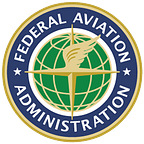Allan Kash
Aviation Safety Inspector, FAA Training and Certification Group
By Paul Cianciolo, FAA Safety Briefing Magazine Associate Editor
Allan Kash was always interested in aviation, but not every path to the skies is an easy journey. Watching the “Sky Kings” western on TV was one of his favorite pastimes while growing up in the suburbs of Baltimore. At age 14, he got his first airplane ride at nearby Essex Sky Park — the spark to be a pilot. However, life had other plans. Alan was still in school and had no money, so the plan had to wait.
After high school, Kash started college classes while working as a grocery store clerk. He worked hard and moved up to store manager. Then at 25, he opened his own retail grocery and liquor store. Kash finally had the chance to earn his private pilot certificate at 28. He did a lot of flying and expanded his business to three stores. He did part-time corporate flying and became a flight instructor teaching single and multiengine students, racking up more than 5,400 hours of dual instruction time.
Years later, Kash was ready for change and returned to school, earning a bachelor’s degree in aviation science at the University of Maryland Eastern Shore. He aimed to work for the FAA to improve general aviation (GA) policy for all. Starting on Sept. 11, 2011, Kash got his opportunity when he answered the call to serve as an aviation safety inspector in FAA Flight Standard Service’s Training and Certification Group.
“Our team improves GA safety by developing and implementing effective data-driven policies and procedures concerning the training and certification of pilots, ground instructors, flight instructors, and remote pilots, as well as developing policies for the certification of pilot schools,” Kash explains. “We develop FIRC [Flight Instructor Refresher Course] policies and manage the program.”
Safety is the force that drives the group to ensure that airmen receive practical, up-to-date training and that all training and certification standards align with their present and future needs.
Kash leads the rulemaking team to remove the expiration date from flight instructor certificates. The group also worked on the new rule regarding medical requirements for pilots conducting commercial balloon operations, which also amended the BasicMed rule. That amendment now allows thousands of pilots operating under BasicMed to act as safety pilots.
With our airspace becoming more complex, Kash has some advice for flight instructors.
“FAA regulations, policies, and aviation safety-related publications are continually changing, and part of the flight instructor’s job is to keep up-to-date to ensure that what we teach is current and accurate,” he notes. “Also, from the first day of a student’s training, mentor safety and emphasize risk management skills.”
Kash recommends that aspiring pilots conduct research online and develop a plan.
“Learn the training requirements and then decide on part 61 or part 141 training. Speak to other pilots about flight training. Interview and then choose the best flight instructor and flight school for you.”
Kash also suggests asking potential flight instructors why they are instructing and gauging their enthusiasm about training.
“Consider how well the aircraft and their facilities are maintained. And know how much training experience the flight instructor has — including if they are a ‘gold seal’ instructor.”
With that, remember: “Out of the clear blue of the western sky comes Sky King!” But before you embark on your pilot journey, be sure to ask yourself if you have the time and commitment at this point to be successful. Your determination and grit will take you safely to the skies.
Paul Cianciolo is an associate editor and the social media lead for FAA Safety Briefing. He is a U.S. Air Force veteran and an auxiliary airman with Civil Air Patrol.
